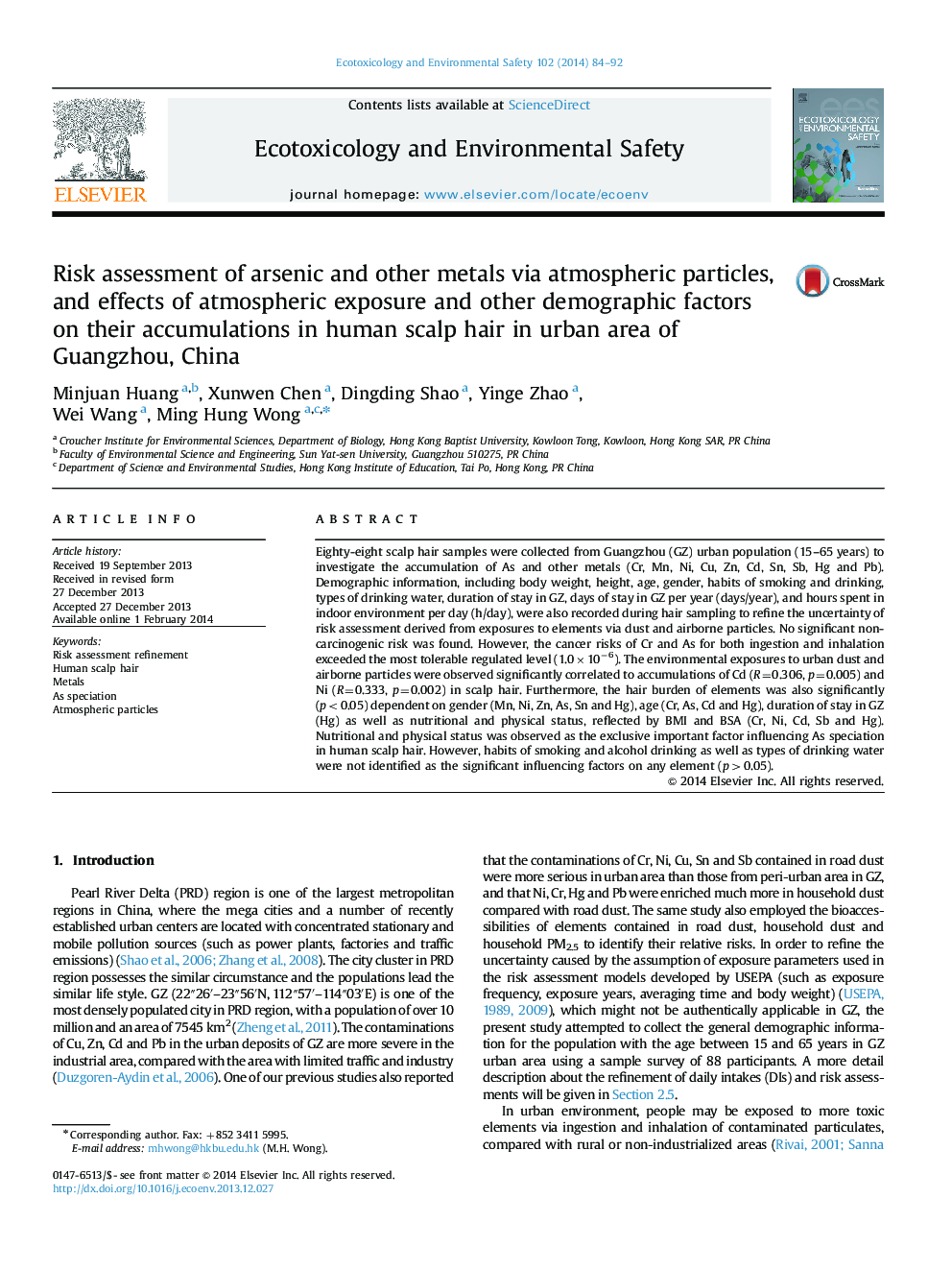| کد مقاله | کد نشریه | سال انتشار | مقاله انگلیسی | نسخه تمام متن |
|---|---|---|---|---|
| 6312198 | 1618961 | 2014 | 9 صفحه PDF | دانلود رایگان |
عنوان انگلیسی مقاله ISI
Risk assessment of arsenic and other metals via atmospheric particles, and effects of atmospheric exposure and other demographic factors on their accumulations in human scalp hair in urban area of Guangzhou, China
ترجمه فارسی عنوان
ارزیابی خطر آرسنیک و فلزات دیگر از طریق ذرات جوی و اثرات قرار گرفتن در معرض اتمسفر و دیگر عوامل جمعیت شناختی بر میزان انباشت آنها در موی انسان در منطقه شهری گوانگژو، چین
دانلود مقاله + سفارش ترجمه
دانلود مقاله ISI انگلیسی
رایگان برای ایرانیان
کلمات کلیدی
پاکسازی ارزیابی ریسک، موی سر انسان فلزات، به عنوان تخصص، ذرات اتمسفر،
موضوعات مرتبط
علوم زیستی و بیوفناوری
علوم محیط زیست
شیمی زیست محیطی
چکیده انگلیسی
Eighty-eight scalp hair samples were collected from Guangzhou (GZ) urban population (15-65 years) to investigate the accumulation of As and other metals (Cr, Mn, Ni, Cu, Zn, Cd, Sn, Sb, Hg and Pb). Demographic information, including body weight, height, age, gender, habits of smoking and drinking, types of drinking water, duration of stay in GZ, days of stay in GZ per year (days/year), and hours spent in indoor environment per day (h/day), were also recorded during hair sampling to refine the uncertainty of risk assessment derived from exposures to elements via dust and airborne particles. No significant non-carcinogenic risk was found. However, the cancer risks of Cr and As for both ingestion and inhalation exceeded the most tolerable regulated level (1.0Ã10â6). The environmental exposures to urban dust and airborne particles were observed significantly correlated to accumulations of Cd (R=0.306, p=0.005) and Ni (R=0.333, p=0.002) in scalp hair. Furthermore, the hair burden of elements was also significantly (p<0.05) dependent on gender (Mn, Ni, Zn, As, Sn and Hg), age (Cr, As, Cd and Hg), duration of stay in GZ (Hg) as well as nutritional and physical status, reflected by BMI and BSA (Cr, Ni, Cd, Sb and Hg). Nutritional and physical status was observed as the exclusive important factor influencing As speciation in human scalp hair. However, habits of smoking and alcohol drinking as well as types of drinking water were not identified as the significant influencing factors on any element (p>0.05).
ناشر
Database: Elsevier - ScienceDirect (ساینس دایرکت)
Journal: Ecotoxicology and Environmental Safety - Volume 102, April 2014, Pages 84-92
Journal: Ecotoxicology and Environmental Safety - Volume 102, April 2014, Pages 84-92
نویسندگان
Minjuan Huang, Xunwen Chen, Dingding Shao, Yinge Zhao, Wei Wang, Ming Hung Wong,
